Who needs free weights when you have stability balls?

There is a world beyond free weights.
Don’t get me wrong: free weights are fantastic. They’re portable, come in a variety of sizes, and if you get the right color (taupe, mauve etc.) they can really tie the room together. But, there are other options that also offer a great workout. And, in the case of stability balls, perhaps a more challenging workout.
To state the obvious, stability balls are round. They will roll away if you don’t control them with your body. This inevitably means that you will have to recruit more muscles — including many underutilized stabilizer muscle groups — to control the ball. That’s the main reason stability balls are conducive to advanced workouts. In fact, most of the following workouts are specifically designed for people in good shape who want to “up the ante” with their fitness regimen.
But, first my usual disclaimer: “Please be cautious when performing these exercises. If you have any pre-existing injuries, please consult a licensed professional before attempting. Be careful operating under the "no pain ... no gain" mantra. The people that carelessly follow that mantra often end up with too much of the former and not enough of the latter.“
Exercise Number # 1: The Stability Ball Chair. Level: Everyone
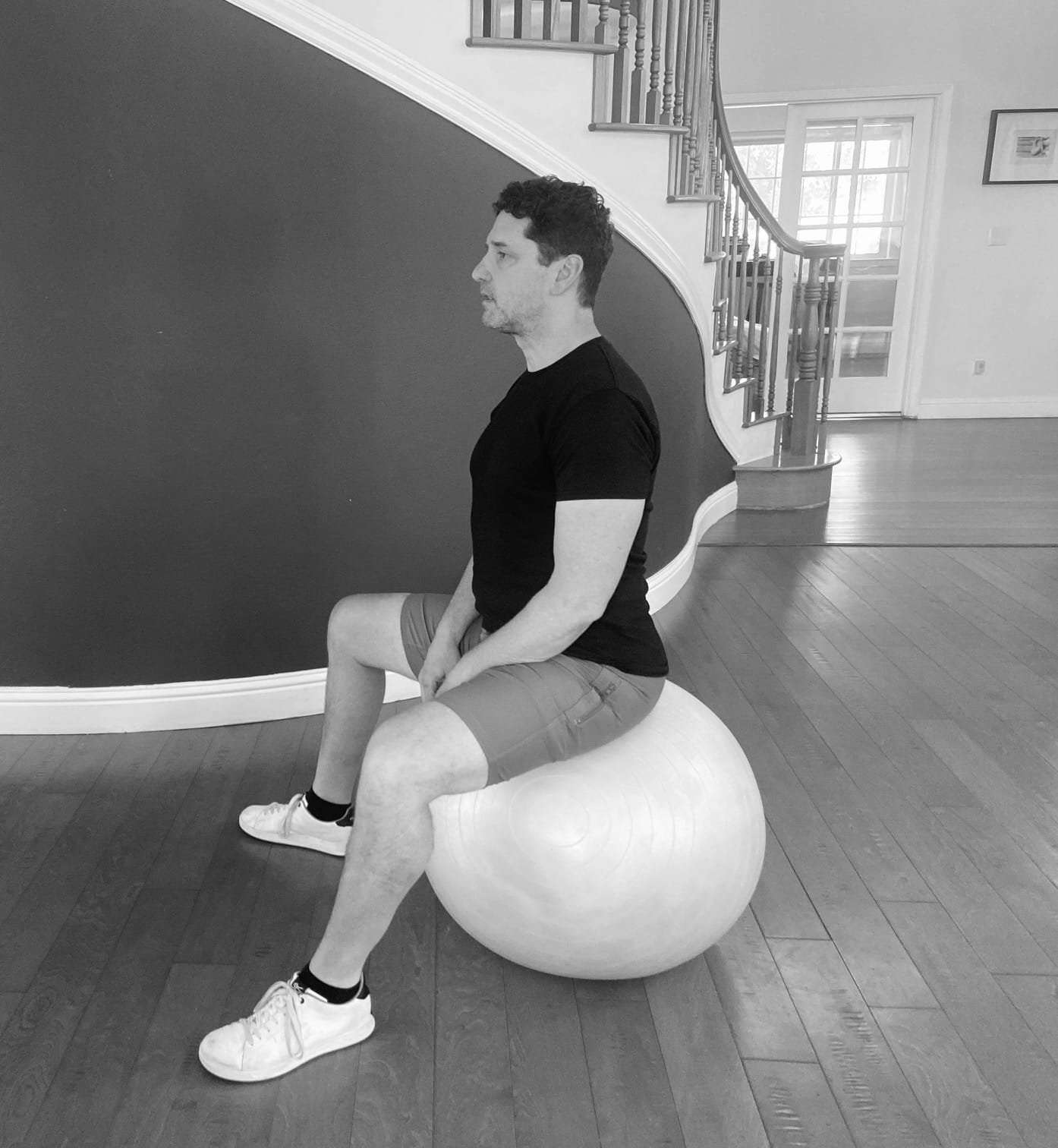
Here is an ostensibly simple exercise: use a stability ball as a chair. The caveat is that it's a lot harder than it looks. Chairs are really bad for two reasons: First of all, they "turn off" and shorten many of your posterior muscles, especially your glutes, hip flexors, and hamstrings. Secondly, by relying on the support of a back rest, your lower back and ab complexes become weakened.
So, this exercise addresses the second issue, although not the first. In order to derive the benefit from using a stability ball in lieu of a chair, you must sit with your back STRAIGHT. This will engage your abs (specifically the deeper "transverse abdominis" muscles) and the lower back complex.
It's actually much more challenging than it appears. You will get fatigued in a matter of minutes and notice soreness in your abs and back fairly quickly — which is indicative that these muscle groups are weak. Oddly, you will also feel this in your calf muscle, which is the main muscle group helping to stabilize you after the abs check out. Aim for five minutes initially (it will be tough) and gradually progress from there. Remember to keep your back straight!
Exercise Number #2: The Stability Ball Leg Lift. Level: Advanced.
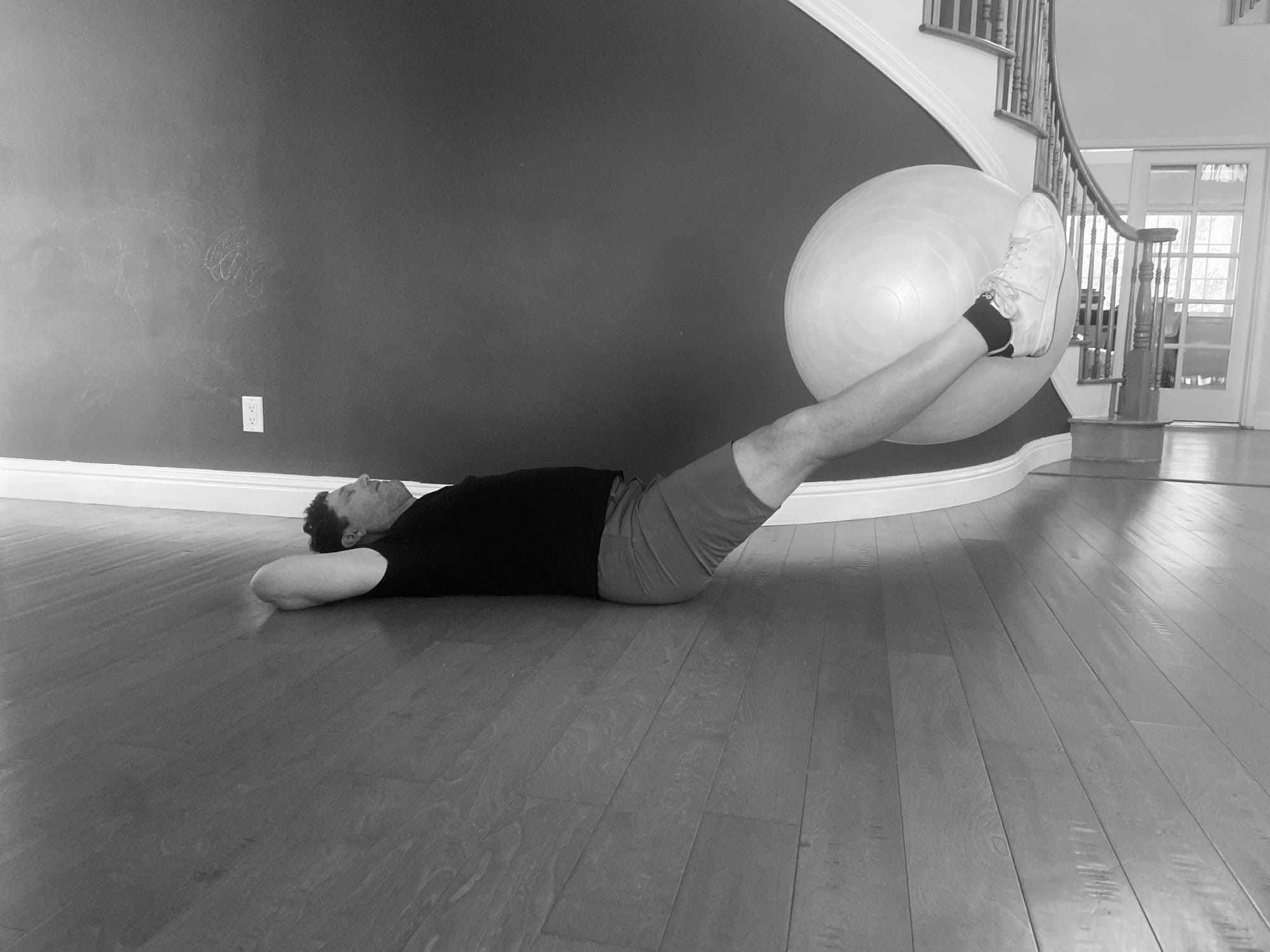
This is a real ab-blaster. It also really works the quads and hip flexors. Do not attempt this if you have a weak core or do not have a decent level of fitness. It might result in injury.
Lie on your back and grip the stability ball between both feet. Lift the ball up about three quarters of the way to your torso. Keep your legs straight. Don't keep the ball any lower than that — it will put too much pressure on your back. If your back needs a little support, place both hands underneath the lower portion of your back. Try for a set of ten, and increase incrementally.
Exercise Number #3: The Plank with Pike or Push-Up. Level: Advanced
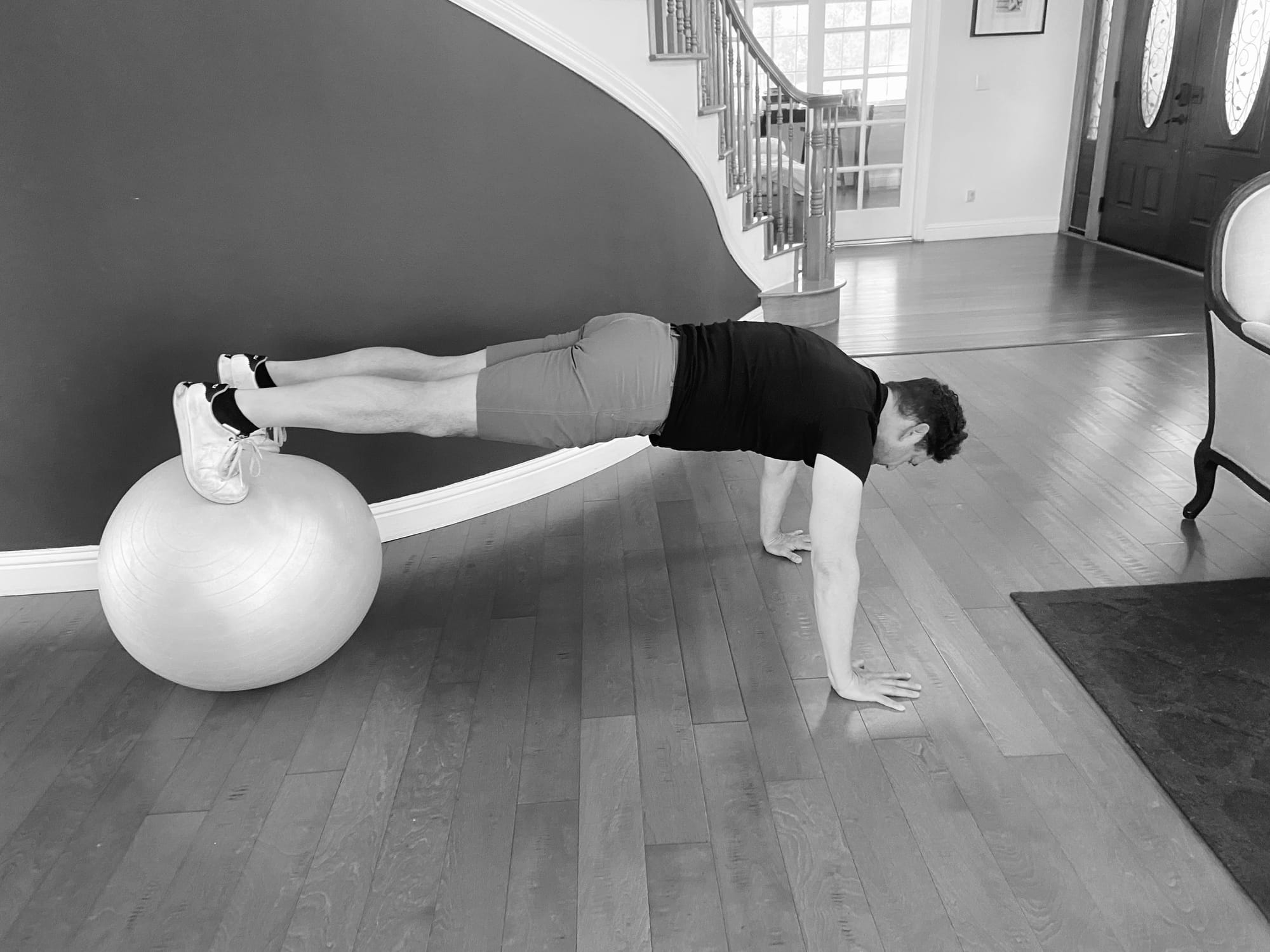
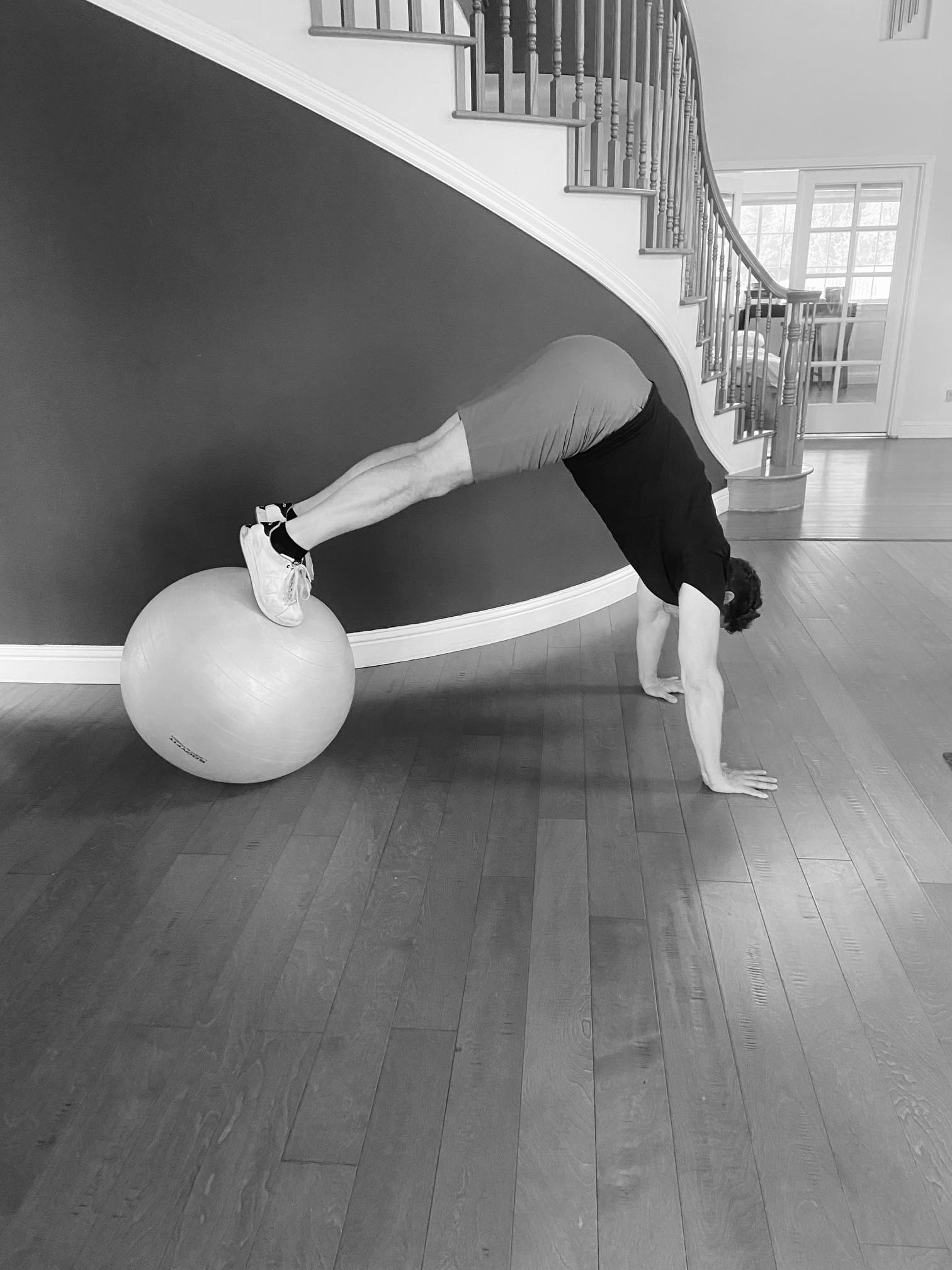
Here's a great full-body exercise. This exercise will work your upper body and your lower bodily equally. Both groups are involved in stabilizing you while you perform the movement. Hold in a push-up position with your hands on the ground and your toes on the ball. Make sure to keep your back straight. Lowering it too much will tax your lower back muscles and raising your butt and back too much will place too much pressure on your arms.
Hold the position for a five second count and then use your abs and leg muscles to thrust yourself in a "pike" position. (As above) Repeat for a count of ten, and increase incrementally. Make it more advanced: add in a push-up! (Pictured below) Try for a set of ten push-up/pike combinations and increase incrementally.
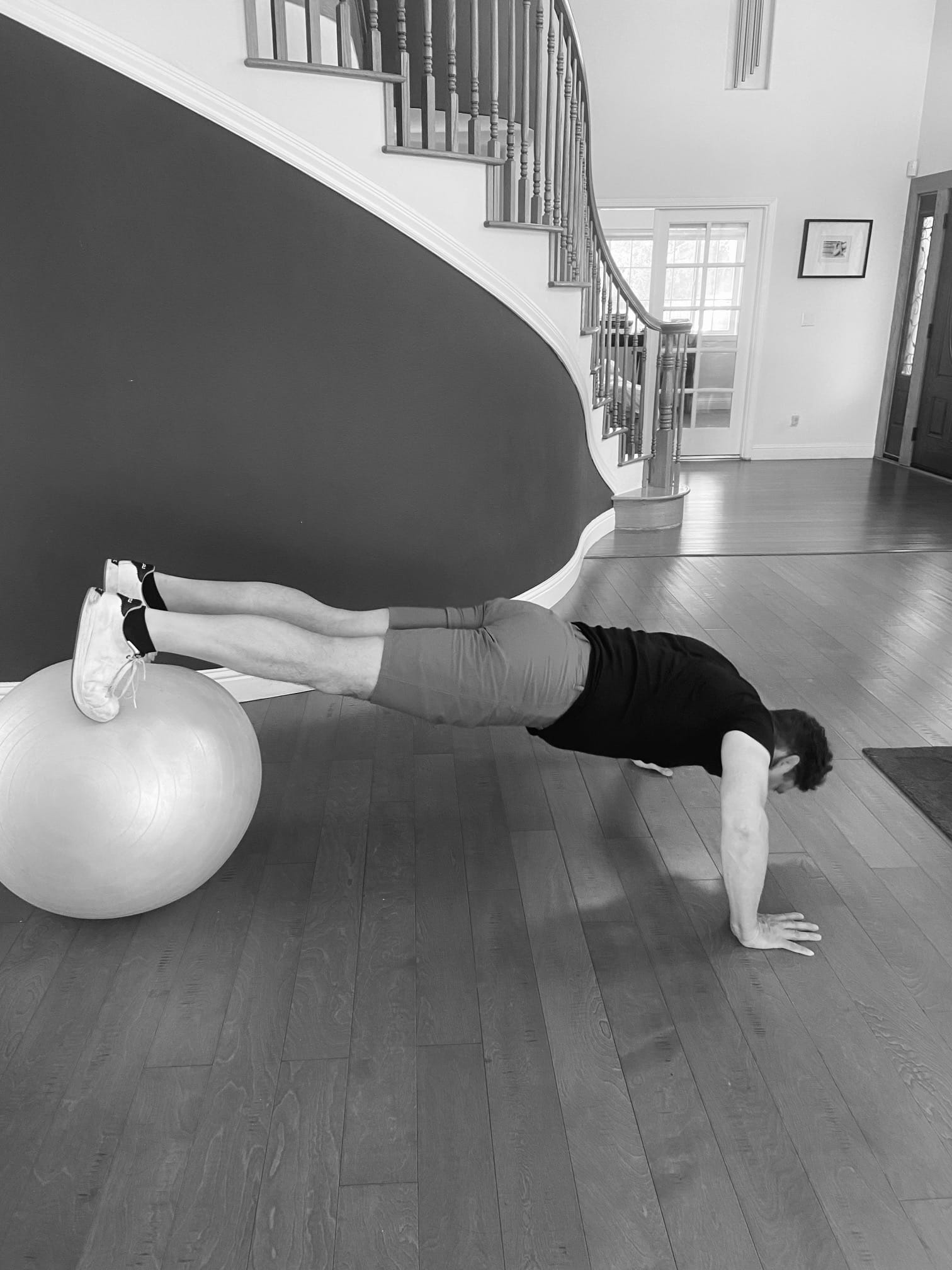
Exercise# 4: The "Stability Ball Superman." Level: Advanced.
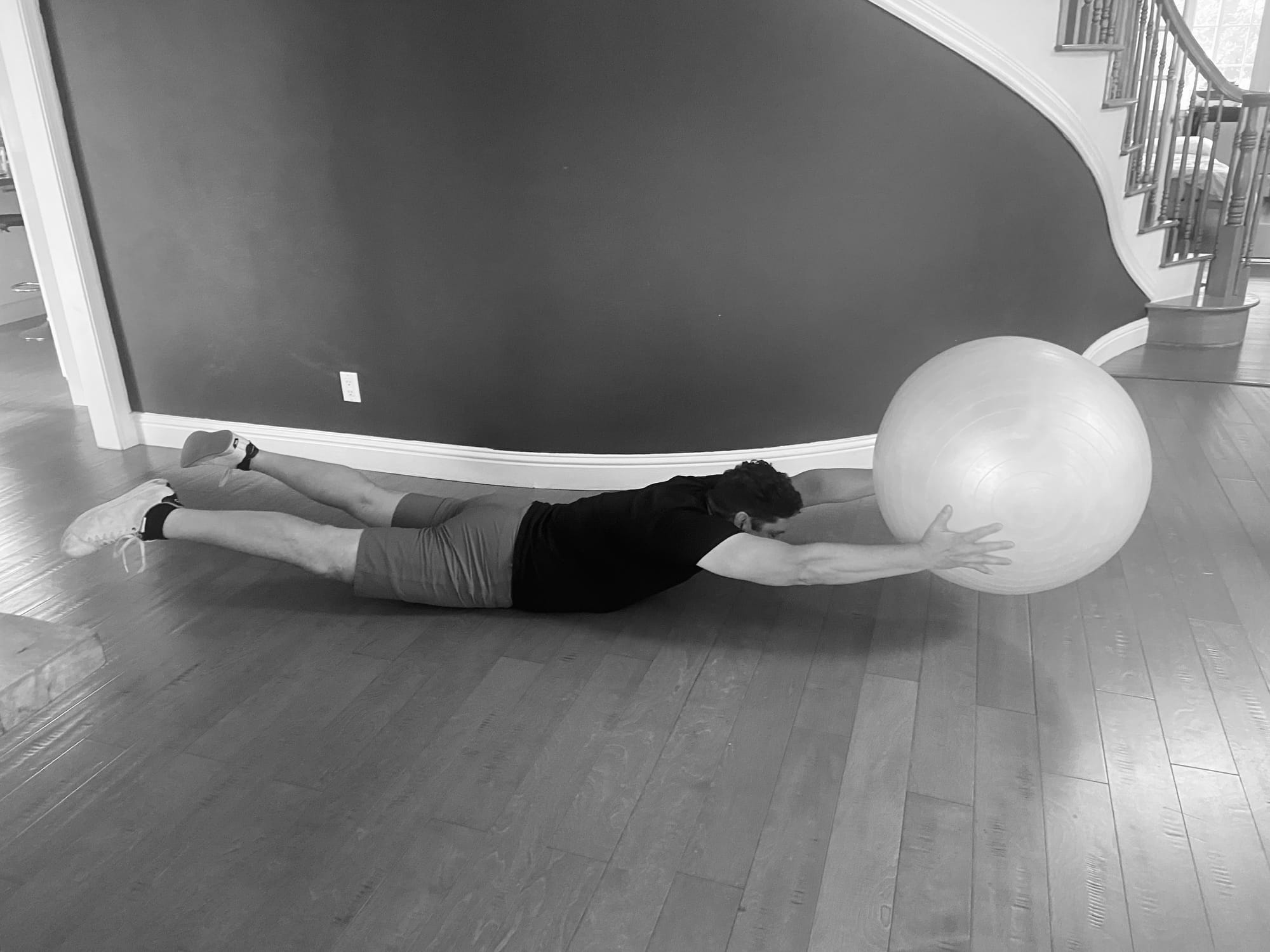
Pick up your stability ball. Really light, right? Now trying holding it while you're in a "superman" position. All of sudden, the ball seems like it's a lead ballon. The reason is very simple: most people are "impinged" in their shoulder and upper back complex from years of office work or looking at their cell phones. The condition is called the "Upper Crossed Syndrome," and will be the subject of an upcoming article.
For this exercise to be effective, you have to lie on your stomach with your feet and knees off the ground (making sure not to bend your knees) and extend your arms as straight as possible with the ball in the air. This is quite difficult. Not only does it require flexibility from an area that's typically tight, but you need significant core strength to sustain the movement. So, start slowly. Use your abs and butt to stabilize yourself. Try holding for 30 seconds and increasing incrementally.
Any questions? Feel free to drop me a line! joshua@joshuabrandtpt.com
Member discussion